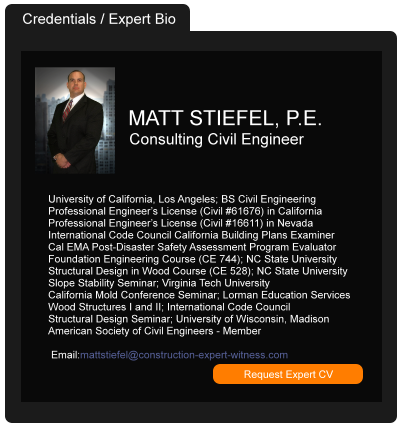Amazon Feels the Heat From Hoverboard Fire Claims
January 20, 2020 —
William L. Doerler - The Subrogation StrategistIn State Farm Fire & Cas. Co. v. Amazon.com, Inc., No. 3:18CV166-M-P, 2019 U.S. Dist. LEXIS 189053 (Oct. 31, 2019), the United States District Court for the Northern District of Mississippi considered a Motion for Judgment on the Pleadings filed by defendant Amazon.com, Inc. (Amazon). Amazon argued that, because it was a “service provider” who cannot be held liable under Mississippi’s Product Liability Act (MPLA), Miss. Code § 11.1.63, the negligence and negligent failure to warn claims filed against it by plaintiff State Farm Fire & Casualty Company (State Farm) failed as a matter of law. The court, looking beyond the MPLA, held that State Farm’s complaint stated a claim against Amazon.
In State Farm, Taylor and Laurel Boone (the Boones), State Farm’s subrogors, purchased two hoverboards from third parties in transactions facilitated by Amazon. They purchased the first hoverboard on October 31, 2015 and the second on November 10, 2015. The Boones started using the hoverboards on or about December 25, 2015. On March 16, 2016, the hoverboards caught fire and the fire spread to destroy the Boones’ home. As alleged in the amended complaint, the hoverboards were “manufactured by unknown manufacturers from China.” State Farm, as the Boones’ subrogee, filed suit asserting negligence and negligent failure to warn claims against Amazon.
Amazon filed a Motion for Judgment on the Pleadings, arguing that State Farm’s claims against it were governed by the MPLA and, as a service provider, it was not liable under the MPLA. In response, State Farm argued that Amazon was liable because it acted as a “marketplace” and that, rather than MPLA claims, Amazon is subject to common law negligence and failure to warn claims. The District Court agreed with State Farm.
Read the court decisionRead the full story...Reprinted courtesy of
William L. Doerler, White and Williams LLPMr. Doerler may be contacted at
doerlerw@whiteandwilliams.com
Why Is It So Hard to Kill This Freeway?
April 18, 2023 —
Benjamin Schneider - BloombergKeith Pete remembers what Claiborne Avenue was like before the interstate.
As a child in the early 1960s, the native New Orleanian would come to Claiborne Avenue with his dad to buy chickens from the local grocers. Sometimes, as a treat, father and son would get hamburgers on French rolls and pineapple juice and picnic on the neutral ground — the avenue’s wide, grassy median, which was thick with live oak trees and azaleas.
“People used to sit and enjoy the weather,” Pete, 68, recalls. “There was beautiful grass all the way down. It was gorgeous.”
At the time, Claiborne Avenue coursed through the heart of New Orleans’ Tremé neighborhood and a major center of Black commerce and culture. “It was safe; it was thriving,” Pete said. “It was mostly wiped out.”
In 1966, workers began removing the avenue’s oaks and driving the pilings that would transform 18 blocks of the tree-lined boulevard into a viaduct carrying Interstate 10. While plans for a Robert Moses-designed waterfront freeway through the French Quarter were halted in 1969 after intense resistance from historic preservationists, the state- and city-backed Claiborne Expressway proceeded. The elevated highway and its tangle of off-ramps destroyed some 500 homes and 326 Black-owned businesses. The once-thriving corridor became a dark, noisy netherworld, unsafe for pedestrians and unhealthy for anyone who breathes.
Read the court decisionRead the full story...Reprinted courtesy of
Benjamin Schneider, Bloomberg
MBS’s $500 Billion Desert Dream Just Keeps Getting Weirder
August 29, 2022 —
Vivian Nereim - BloombergOne day last September, a curious email arrived in Chris Hables Gray’s inbox. An author and self-described anarchist, feminist, and revolutionary, Gray fits right into Santa Cruz, Calif., where he lives. He’s written extensively about genetic engineering and the inevitable rise of cyborgs, attending protests in between for causes such as Black Lives Matter.
While Gray had taken some consulting gigs over the years, he’d never received an offer like this one. The first shock was the money: significantly more than he’d earned from all but one of his books. The second was the task: researching the aesthetics of seminal works of science fiction such as Blade Runner. The biggest surprise, however, was the ultimate client: Mohammed bin Salman, the 36-year-old crown prince of Saudi Arabia.
MBS, as he’s known abroad, was in the early stages of one of the largest and most difficult construction projects in history, which involves turning an expanse of desert the size of Belgium into a high-tech city-region called Neom. Starting with a budget of $500 billion, MBS bills Neom as a showpiece that will transform Saudi Arabia’s economy and serve as a testbed for technologies that could revolutionize daily life. And as Gray’s proposed assignment suggested, the crown prince’s vision bears little resemblance to the cities of today. Intrigued, Gray took the job. “If I can be honest with how I see the world, I’ll pretty much put my work out to anyone,” he says.
Read the court decisionRead the full story...Reprinted courtesy of
Vivian Nereim, Bloomberg
School District Practice Bulletin: Loose Lips Can Sink More Than Ships
April 08, 2014 —
Gregory J. Rolen – Haight Brown & Bonesteel LLPWe all understand how idle conversation and gossip can negatively impact relationships and workplace morale. But can they cause a school district to lose their lawyer? It is black-letter law that confidential communications between attorney and client are privileged, inadmissible, and cannot be later used against that client by third parties. However, under many circumstances confidential communications that occurred just outside the traditional attorney-client relationship can result in disqualification of counsel. In an environment when many educators become lawyers and education lawyers go from job to job and from client to client, care must be given to the context in which such communications occur.
I. The Ethical Duty of Confidentiality Is Broader Than the Attorney-Client Privilege.
Generally, every lawyer has a duty to refuse to disclose, and to prevent another from disclosing, a confidential communication between the attorney and client. (Fox Searchlight Pictures, Inc. v. Paladino (2001) 89 Cal. App .4th 294, 309; Evid. Code § 954.) The attorney-client privilege is statutory and permits the holder of the privilege to prevent disclosure, including testimony by the attorney, as to communications that are subject to the privilege. (Evid. Code §§ 952-955.)
The attorney’s ethical duty of confidentiality under Business & Professions Code section 6068(e) is broader than the attorney-client privilege. It extends to all information gained in the professional relationship that the client has requested be kept secret or the disclosure of which would likely be harmful or embarrassing to the client. (See Cal. State Bar Formal Opns. No. 1993-133, 1986-87, 1981-58, and 1976-37; Los Angeles County Bar Association Formal Opns. Nos. 456, 436, and 386. See also In re Jordan (1972) 7 Cal.3d 930, 940-41.) However, if the status of the person and the purpose of the conversation is unclear to the attorney, highly negative outcomes may result.
Read the court decisionRead the full story...Reprinted courtesy of
Gregory J. Rolen, Haight Brown & Bonesteel LLPMr. Rolen may be contacted at
grolen@hbblaw.com
Woodbridge II and the Nuanced Meaning of “Adverse Use” in Hostile Property Rights Cases in Colorado
November 23, 2020 —
Luke Mecklenburg - Snell & Wilmer Real Estate Litigation BlogEarlier this year, the Colorado Court of Appeals issued an opinion addressing at length “whether the requirement that the use be ‘adverse’ in the adverse possession context is coextensive with adverse use in the prescriptive easement context.” See Woodbridge Condo. Ass’n, Inc. v. Lo Viento Blanco, LLC, 2020 COA 34 (Woodbridge II), ¶ 2, cert. granted, No. 20SC292, 2020 WL 5405376 (Colo. Sept. 8, 2020). As detailed below, the Woodbridge II court concluded that the meanings of “adverse” in these two contexts are not coextensive—while “hostility” in the adverse possession context requires a claim of exclusive ownership of the property, a party claiming a prescriptive easement is only required to “show a nonpermissive or otherwise unauthorized use of property that interfered with the owner’s property interests.” Thus, the Woodbridge II court reasoned a claimants’ acknowledgement or recognition of an owner’s title alone is insufficient to defeat “adverse use” in the prescriptive easement context.
This significant ruling is at odds with a prior division’s broad statement, while considering a prescriptive easement claim, that “[i]n general, when an adverse occupier acknowledges or recognizes the title of the owner during the occupant’s claimed prescriptive period, the occupant interrupts the prescriptive use.” See Trask v. Nozisko, 134 P.3d 544, 553 (Colo. App. 2006). Perhaps for that reason, Woodbridge II is currently pending certiorari review before the Colorado Supreme Court in a case that should provide some much-needed clarity on what constitutes “adverse use” in the context of a prescriptive easement. As we await the Colorado Supreme Court’s decision, I thought it worthwhile to provide a brief analysis of the Woodbridge II court’s deep dive into the nuances of “adverse use” in this field of Colorado law.
Read the court decisionRead the full story...Reprinted courtesy of
Luke Mecklenburg, Snell & WilmerMr. Mecklenburg may be contacted at
lmecklenburg@swlaw.com
Flood Sublimits Do Not Apply to Loss Caused by Named Windstorm
May 07, 2015 —
Tred R. Eyerly – Insurance Law HawaiiThe New Jersey Superior Court considered whether recovery for storm surge was limited by the policy's sublimit for loss caused by flood. Public Serv. Enter. Group, Inc. v. Ace Am. Ins. Co., 2015 N. J. Super. Unpub. LEXIS 620 (N.J. Super. Ct. Law Div. March 23, 2015).
Storm surge from Superstorm Sandy inundated and damaged Public Service Enterprise Group, Inc.'s (PSEG) property, including eight large generating stations. PSEG had coverage of $1 billion under policies with defendant carriers. There was no sublimit in the policies for "named windstorms," other than named windstorms in Florida. A $250 million sublimit appeared in the policies for losses caused by "flood."
The carriers paid only a portion of PSEG's claim. The total damages exceeded $500 million.
Read the court decisionRead the full story...Reprinted courtesy of
Tred R. Eyerly, Insurance Law HawaiiMr. Eyerly may be contacted at
te@hawaiilawyer.com
Colorado House Bill 19-1170: Undefined Levels of Mold or Dampness Can Make a Leased Residential Premises Uninhabitable
April 03, 2019 —
Steve Heisdorffer - Colorado Construction LitigationOne of the 407 bills the Colorado legislature is considering as of the date of this blog post is House Bill 19-1170, the Residential Tenants Health and Safety Act, which can be found at https://leg.colorado.gov/bills/hb19-1170 and clicking on the link for the recent bill text. The bill passed the House on February 26 and is in the Senate for consideration. The bill currently adds two substantive conditions to those conditions that make a residential premises uninhabitable. One is the lack of functioning appliances that conformed to applicable law when installed and that are maintained in good working order. The second is “mold that is associated with dampness, or there is any other condition causing the premises to be damp, which condition, if not remedied, would materially interfere with the health or safety of the tenant…,” referred to here as “the mold or dampness provision.” The bill also amends various procedural provisions of Colorado law to make enforcement by a tenant easier and broadens tenant remedies. The bill grants jurisdiction to county and small claims courts to grant injunctions for breach. This article focuses on the mold or dampness provision.
The mold or dampness provision is vague and will likely lead to abuse. First, there is mold everywhere. While expert witnesses routinely testify about the level of exposure that is unacceptable, no generally accepted medical standards for an unacceptable level of mold exposure currently exist, and each person reacts to mold differently. There is no requirement in the bill that mold exposure exceed levels that are generally considered harmful by experts in the field, or even in excess of naturally occurring background levels. Second, some sources estimate that there are over 100,000 different species of mold. No harmful effects have been shown for many species of mold, while other species of mold are considered harmful.
Read the court decisionRead the full story...Reprinted courtesy of
Steve Heisdorffer, Higgins, Hopkins, McLain & RoswellMr. Heisdorffer may be contacted at
heisdorffer@hhmrlaw.com
A New Digital Twin for an Existing Bridge
May 01, 2023 —
Aarni Heiskanen - AEC BusinessThe smartBRIDGE Hamburg project devised a digital twin of a 1970s bridge using open BIM technologies. Allplan and Solibri were instrumental in developing the twin that enables the Hamburg Port Authority, HPA, to maintain the critical infrastructure asset predictively.
Built in 1974, the Köhlbrand Bridge is Germany’s second-longest road bridge and one of its busiest. The cable-stayed bridge serves around 36,000 vehicles daily, thus being crucial to the local economy.
The age of the bridge and the amount of daily traffic it supported meant that continuous real-time monitoring was the best way to identify repairs and minimize disruption to traffic.
Read the court decisionRead the full story...Reprinted courtesy of
Aarni Heiskanen, AEC BusinessMr. Heiskanen may be contacted at
aec-business@aepartners.fi


































































